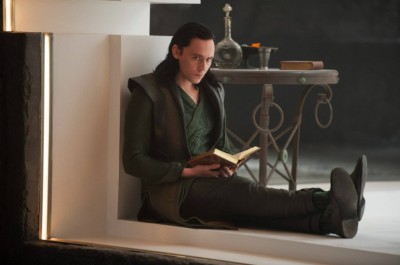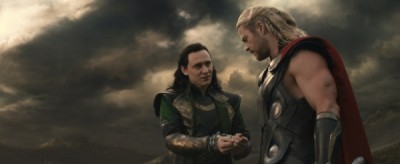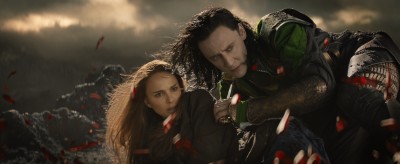Loki in “Thor: the Dark World”– Why I’m Currently Proud of Hollywood
I really love a good movie. At times, I wonder if I’m hard to please, but I really don’t think I am. Engaging story, good characters, and solid execution are really all I require. Modern special effects are fun and have enabled filmmakers to produce movies that would never have been possible when I was a child, but I don’t require them. Often, I feel they only get in the way as filmmakers think more about them than the story itself. And don’t get me started on remakes. To say the least, I often walk away from the theater wondering if storytellers or market analysts were responsible for the film. But currently, I am proud, and it is all because of Loki in Thor: the Dark World.

Tom Hiddleston’s Loki has been arresting since his first appearance in Thor (2011). He continued this trend in The Avengers (2012). With the character being well developed (as most Marvel characters are) and Hiddleston’s performance leaving nothing lacking, Loki is arguably more popular than Thor himself and has a following of swooning fans, male and female alike. Just check Pinterest. You’ll find some of these captions on the pictures: “Loki just wants to be loved”; “Heartbreaking evolution of Loki”; “Loki protects Jane!” This is just a sampling of what fans say about him.
Now is probably a good time to let you know I’m not a Marvel comic expert. I have never read even one issue of the Thor series, so I cannot comment on this film based on the adaptation material. If you would like to read a review that considers this, please check out “Thor: The Dark World” on the Queen’s Logic blog. However, what I am familiar with is the comic and film’s source material – Norse mythology and archetypes.
Loki is an old character – very old. As much as we may want to call him a villain, Loki is not a villain in the traditional, good vs. evil sense. Loki is a Trickster, and the Trickster can be both hero and villain depending on the circumstances. Master of comparative mythology Joseph Campbell defines the Trickster as the “disrupter of programs”. The Trickster messes up norms, throws a kink into plans, and traipses about making mischief of all sorts. He manifests in dreams, myths, and folk tales in, typically, a negative aspect. Loveable but dangerous, he can also be a creative force1., as can be seen in a Native American creation myth featuring the trickster Raven. In this myth, Raven tricks the Sky Chief into surrendering the sun he keeps in a locked chest, and Raven steals it, bringing it to Earth. As a result, all of Earth’s inhabitants benefit. No matter the Trickster’s goal, he is a character that routinely crosses boundaries, looks out for himself, shifts his appearance, and is always, always playing a trick.

Loki has long been identified as the primary Trickster figure in Norse Mythology. As a member of the Norse pantheon, he was worshipped and feared by these ancient humans just like the other gods. That said he is always disruptive and up to mischief. In “The Death of Baldr”, Frigg, who is also Baldr’s mother, gets all of creation to promise never to hurt Baldr because of nightmares she and her son are having. Somehow, she overlooks one plant, the mistletoe. Loki tricks the secret out of her, and while all of the gods are hurtling objects at Baldr (because nothing will hurt him, so of course they turn it into a sport), Loki makes a dart out of mistletoe. He then tricks a blind god into throwing it at Baldr. Well, Baldr falls down dead, and the poor blind guy is blamed. This is the sort of shenanigan for which Loki is infamous in the Eddas (Norse myth cycle). An embodiment of chaos, Loki’s aim is always the antithesis whatever the primary mission may be.

So why am I proud of Hollywood? Despite indications that many would be thrilled if Loki truly has a heart, he has remained the Trickster over three big budget films. Every action is a bluff, and Loki is always motivated by what is best for him – whether that be trying to kill Thor or help him. Even if he seems to have selfless motivations, he is still tricking someone and ultimately tricking everyone. Whether this was the responsibility of producers, Marvel Comics, director Alan Taylor, the writers, or Mr. Hiddleston, sticking with this tactic will continue to make this character magnetic. No matter what, Loki must remain true to himself in order to be a successful character. If he succumbs, he ceases to be a symbol.

According to Carl Jung, one of the founders of Depth Psychology, the Trickster is an archetype, a pattern/symbol that is a component of each human psyche on an instinctual level. Though the Trickster may appear as a character in story and art, he is actually a part of all of us.2. In the end, the true appeal of Loki is he is that part of us which bucks the norm, lusts for success and attention, and values self-preservation above all else. So go ahead. Love Loki. He deserves it; you deserve it. But remember what he is and accept him for what he is – heartless, self-serving, and in it for himself. Despite being an essential balance in the world, unless it serves him, he will not save you.
1. If you are interested in the work of Joseph Campbell, please consider reading The Power of Myth followed by his most pivotal work The Hero With a Thousand Faces
2. More information on Carl Jung’s theory of archetypes may be found in Man and His Symbols, The Archetypes and the Collective Unconscious, and Aion.
Leave a Reply